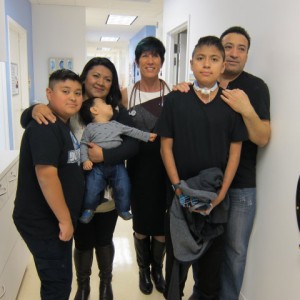Teen, Ill with PAH, Gets 2nd Chance at Life at Stanford Children’s Hospital

A new set of heart and lungs have brought renewed hope to Oswaldo Jimenez and, through the innovative approach taken by his transplant team at Lucile Packard Children’s Hospital Stanford in California, a fresh chance at life. The Salem, Oregon, teenager, diagnosed with pulmonary arterial hypertension (PAH) at age 9, was at risk of dying just four years later.
The high pulmonary arterial pressure caused by the disease was diminishing the blood flow through the boy’s lungs, dangerously taxing his heart and lowering blood-oxygen levels in the rest of his body.
“The high blood pressure in his lungs was requiring his heart to pump harder and harder,” said pediatric cardiologist Dr. Jeffrey Feinstein, director of the Vera Moulton Wall Center for Pulmonary Vascular Disease, and head of the hospital’s pediatric pulmonary hypertension program, in a press release. “This eventually caused his heart to fail.”
Oswaldo’s decline was quick. “When we initially evaluated him a few months earlier, he had very few symptoms; when he returned [in spring, 2015], he could only walk a short distance before getting breathless,” said Dr. Feinstein. “The pressure in his lungs also caused two episodes of pulmonary hemorrhage. This bleeding into the lungs can be fatal.”
PAH is a condition that worsens over time and can be potentially fatal, since pressure in the lung arteries can strain the heart. Heart and lung transplant is a radical treatment for this condition, and a combined transplant of the two organs is not common, with only 24 of these surgeries performed in the U.S. in 2014.
In Oswaldo’s case, the doctors decided to try a new procedure, one that would allow him to be more mobile and active before surgery.
“An integral element to success for children awaiting lung transplants is to keep them moving around,” said pediatric pulmonologist Dr. Carol Conrad, director of the pediatric lung and heart-lung transplant program at the hospital and an associate professor of pediatrics at Stanford University’s School of Medicine. “Being in good shape helps to make them good candidates for the transplant operation. Pre-operative debilitation leads to prolonged recovery period post-op and a poorer outcome in the long run.”
The team placed what is known as a pulmonary artery to left artery shunt, which allowed his failing heart to rest and enabled him to remain active as he waited for the transplant. Fortunately for Oswaldo, a week after the surgeons placed the shunt in July 2015, donor organs became available.
“We are so, so thankful for organ donation,” said Oswaldo’s mom, Carmen. “During another family’s time of incredible grief, they gave my son the ultimate gift of life.”
Oswaldo returned from California to Oregon in late December, and he is continuing to recover. “I want to run and play, and get my life back,” Oswaldo said. Thanks to the life-saving and innovative treatment at Stanford, his dream will likely be realized.








